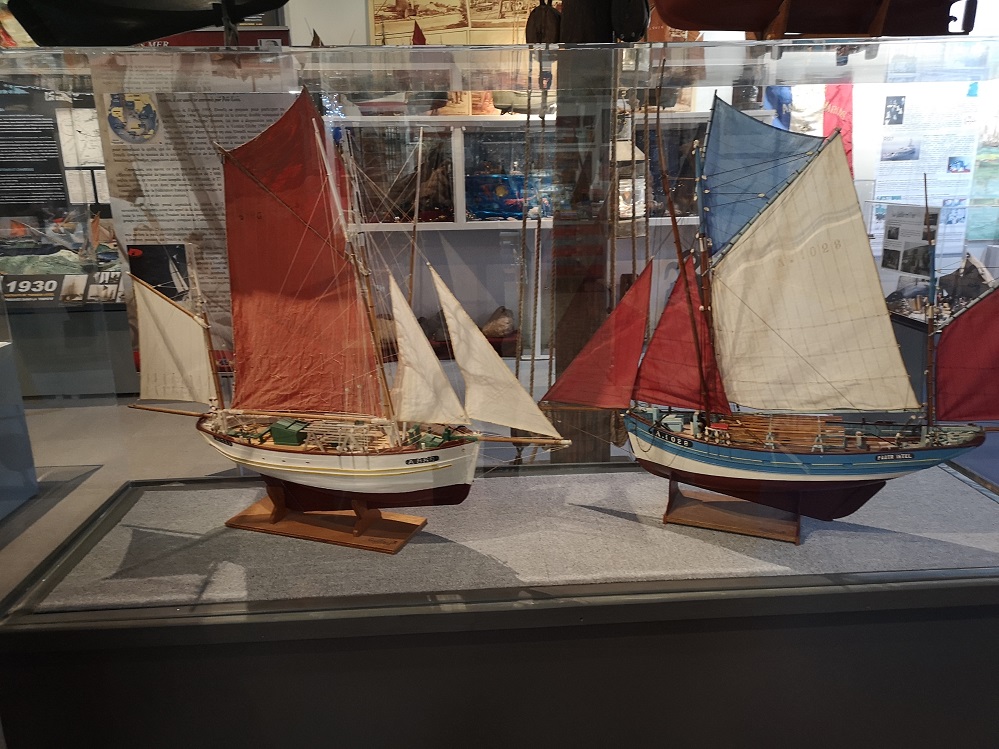
Faced with the sardine crisis that raged along the Atlantic coast, the citizen of Etel reacted quickly by turning to tuna fishing at the end of the 19th century, following the example of the people of Groix island. This new fishery upset the habits. The sailors left from June to October to track down the albacore tuna which was located near the Azores at the beginning of the season and gradually moved towards the Grand Sole banks off Ireland.
Step by Step, the deck boats were replaced by new vessels, larger and better adapted to this offshore fishing: the dundries. These were 40 to 60 ton boats, about 20 meters long, equipped with 5 to 6 sails. The navigation instruments were rudimentary: a compass, a sextant and a few navigation charts. The crew consisted of a skipper, 4 sailors, a novice and a foam.
The sailors track the albacore from daybreak to nightfall. The fishing is done by line. Under the eye of the skipper, the skipper follows the hooks and prepares the lures made of horse hair, corn cobs or carded garlic tails. The poles, long wooden poles extended by a more flexible chestnut rod, receive the lines. In fishing, the poles are brought to the horizontal. In strong crosswinds, sailors weight the lines with a piece of chain, which keeps them parallel to the boat and prevents them from tangling.
When the albacore bites, it is quickly reeled in and killed with a spike. The sailors gut it, wash it and then place it on trestles on the deck. The skipper keeps an eye on the weather changes, because under the effect of a stormy weather it happens that the whole fishing is altered. After returning from the campaign, the tuna is unloaded to be processed in the factories. A woman called "senteuse" is in charge of checking the quality of the fish. From her interpretations is fixed the purchase price!
Around 1920, tuna fishing led to an important economic boom which lasted until the Second World War. In the 1930s, 250 tuna boats formed one of the most beautiful fleets on the Atlantic coast.